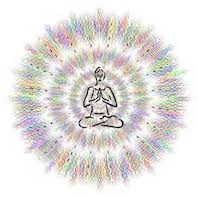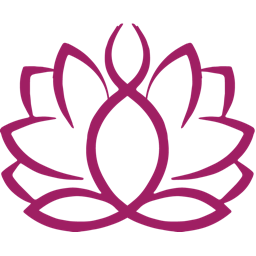The Truth About Yoga
Yoga is a household name - everyone knows what yoga is, it is synonymous with being fit, hip and healthy. A “new age” way of living.
So many of us worldwide have jumped on the yoga cart without giving it a second thought.
Why would anyone wish to give it a second thought? You're able to let your mind go and just breathe your way into bliss. The concept is attractive because it conjures real positive emotions and the benefits are apparent, both physically and mentally.
It has been used as a solution to rid depression, anxiety, and physical ailments, as well as giving an anchor to many people with concepts off the yoga mat, such as connecting with the universe by giving out positive energy and thoughts of gratefulness.
The philosophical aspects of yoga appealed to many and helped those with stagnant lives reconnect and find a purpose. It’s no wonder that the concept of Yoga became popular and surged through the west like a tidal wave back in the 1950s.
Yoga was, and still is, attractive to many!
However, for many who have secular beliefs, or believe in one Creator; whether that is Allaah, God or Yahweh, and believe in excluding Him above everything - Yoga becomes problematic.
The truth is that yoga is a practice that is born from buddhism and hinduism - depending on which religious philosophies your Yoga master/teacher ascribes to.
Yoga Students WILL take on Buddhist and Hindu Traditions
Over the decades the world has tried to secularise yoga so as to tap into its benefits without going into its religious origins.
Some Christians have even tried to create their own “Christian Yoga,” where they enjoy the therapeutic benefits of traditional yoga, but in their practice they turn their attention towards God and use biblical words for their mantras and chants.
However, no matter if you adhere to secular beliefs or otherwise, as yoga students deepen their yoga practice and meditation, they eventually begin adhering to and practising Buddhism or Hinduism no matter how they may try to keep away from it.
Many will feel an internal conflict, but continue because they feel and see the benefits of the holistic practice of yoga.
Others may feel there are no better alternatives to gain the health or mindset goals they can achieve by attending Yoga classes. Yoga has become that double-edged sword for many.
However, the longer you learn from yoga practitioners you will eventually take on their beliefs, compromising your own in the process. That’s the real truth!
It doesn’t matter how one tries to spin yoga so they can move away from its religious beginnings, Yoga is and always will be intrinsically entwined in the religious philosophies of buddhism and hinduism.
Let us delve into a few things that will show us how.
What is the Meaning of the Sanskrit Word: Yoga
YOGA - is a Sanskrit word which means “to yoke” or “union”.
The name itself perfectly describes the aim of the yogi (person who practises yoga) which is to ultimately yoke “the self” with a “higher power” (the universe), where you become one. A union!
By simply using the word “yoga” to describe your exercises, you have already ascribed to the ancient philosophies of buddhism and hinduism.
When a student does christian yoga - they are trying to become one with the universe whilst still trying to give respect to their God. The two words cannot be used together, as the meaning becomes nonsensical.
Yoga Classes will ALWAYS Tap Into Ancient Philosophies
As well as the name itself, yoga classes, from the beginning to the end are full of philosophies entrenched in buddhism and hinduism. A student cannot join a class with the intention of keeping away from its origins - it's literally impossible and here is why:
1. OM
Many yoga practitioners will practise chanting “Om” at the beginning of their classes and throughout their meditation practice, where it is needed.

Om is a sacred syllable in Hinduism and Buddhism. It is described by many yogi masters as the sound and vibration of the universe. OM has three sounds that represent creation, preservation and destruction.
The theory behind chanting Om is to allow the participants in a yoga class to connect with each other so that the group can collectively become one with the universe.
By chanting OM, the yoga student is able to recreate the same sound and vibration as that of the universe in their bodies, allowing them to focus the mind thus cultivating the ability to connect the “self” to the universe. The combined sound will create a loud resonating vibration that allows the group to completely let go of the physical realm and go into a trance like state.
Yoga teachers explain that any word can be used to focus the mind to connect to their own higher power.
However, there are many problems with this concept.
Firstly, if all the yoga students in the class chanted their own word, whether that is God or Allaah or another non religious word, this would break the connection with the other students as they would not be chanting one word in union. The class would be unable to create the same resonating sound to reflect the universe, thus making the whole yoga practise illogical!
Using the very definition of the word yoga, a student is trying to “yoke” the self with the universe! And by chanting a word other than Om, the student is unable to fully achieve this in the way that the ancient yogic texts describe.
2. Surya Namaskar
After students are required to chant Om, they will begin the physical part of the class with a sequence flow called Surya Namaskar, which is often done first thing in the morning as the sun rises so as to greet it.
Surya means sun and Namaskar means salute. To translate this into English it means sun salutations or to salute/worship the sun.
In ancient yogic philosophy, a few thousand years ago, one of the most revered gods in Vedic culture (the culture that was said to have given birth to yoga), was Surya - the God of the Sun.

The God Surya was considered as “giver of life.” As we all know the sun is vital in giving life, and therefore Yogis considered it important to recognise, connect to, and worship it.
The Surya Namaskar flow is made up of 12 postures so as to represent the twelve astrological houses the sun moves through. These postures are designed so that the student can connect with the sun, take on its life-giving energy and recognise its importance.
This flow focuses the student’s mind enabling them to connect to the universe during the meditation part of their yoga practice.
How can one reconcile saluting and worshipping the sun at the beginning of their yoga practice when they believe in one creator or ascribe to secular beliefs?
3. Asana (postures)
There are many postures, otherwise known in Sanskrit as “asana.” Ancient yogis used asana practice to physically depict many religious and philosophical concepts entrenched in buddhism and hinduism. Let us take Trikonasana as one example.
This Sanskrit name means three (tri), angle (kon), posture (asana).
Trikonasana, the three angle posture, is commonly known as the triangle posture. In ancient yogic texts, this asana has many symbolic meanings. One is that the triangle represents the mind, spirit and body.
It is also shown to symbolise the past, present and future - where the back leg represents the past and is the foundation upon which the present and future are shaped. The front leg and arm reaching out represents the present and future.
Some ancient texts say this asana personifies the three forces of the universe: Lord Brahma (Creator), Lord Vishnu (Preserver), and Lord Shiva (Destroyer or Transformer).
Other texts say that Trikonasana is symbolic to the three audible sounds of the universe A-U-M that make up the sacred sounds in OM, which is frequently chanted by yogis in order to deepen their meditation practice, helping them to unify themselves with a higher power - the universe.
All yoga postures are linked to ancient Buddhist or Hindu philosophies in one way or another. Why wouldn’t they be, they were designed by yogi masters who were either buddhist or hindu.
4. Pranayama (Breath)
Prāṇa is the sanskrit word for force of life - referring to the breath.
Pranayama practice is when the yoga student uses the breath as a means to deepen asana practice. Yogi masters believe that when movement is combined with the breath, it aids the student to release stagnant or blocked energy in “energy points” otherwise known in sanskrit as chakras. This release of blockages aids the student to be able to sit in meditation for hours without being bothered by aches and pains.
In Hindu literature, prāṇa is sometimes described as originating from the Sun and connecting the elements.
The yoga student is encouraged to keep the breath as a focal point in their mind as they breathe in the “sun’s energy” and therefore enable them to cultivate their connection with the elements in the universe so that they become one with them.
How can a student who has secular beliefs or believes in one creator do breathwork in a Yoga class, without worshipping the Sun and elements in the universe?
5.Meditation
After asana and pranayama work, which is the practical part of the yoga practice, the student will focus on their mindset - the meditation.
The aim of asana and pranayama work is to allow the student and yoga master to sit in meditation for hours without being bothered by the physical body and mind.
Meditation is what the yoga student and all yogi masters aim to perfect when doing asana and pranayama work - it is the very thing that focuses the students or the yogi masters mind so that they are able to completely become one with the universe.
One cannot get to the point of deep meditation and complete release of both body and mind without ascribing to the tenets of ancient buddhist and hindu philosophy - it is impossible to do so!
6. Namaste
And finally, teachers and students will use the commonly known Sanskrit greeting “namaste” meaning “I bow to you,” to end the class.
This greeting often conflicts with some beliefs, as many only bow to their Creator - be it Allaah, God or Yahweh. Others who don’t ascribe to a creator - simply do not wish to bow to anything or anyone.
The Ultimate Aim of Yoga

As you can see from the above discussion, all aspects of a yoga class are deeply rooted in Buddhism and Hinduism.
Ancient Yogis created the practice of Yoga - which is considered a way of life - so that students could strengthen their body with asanas (poses), combine their breath (pranayama) with movement and release their mind with chants, mantras and meditation.
Once students practise meditation for hours, helping to release all connection to the physical world, this practice would eventually lead the student to achieve the ultimate aim of Yoga which is Nirvana - a complete union with the universe resulting in enlightenment - a higher state of being (a buddhist philosophy).
As one can see above, from the opening of the class using Om to its conclusion using the word namaste, a yoga student cannot join a yoga class with the intention of not practising Buddhism and Hinduism.
Students who have practised Yoga for some time will ascribe to these two religions, in some form or another. It is impossible not to. If you sit with a group of people - you will become them.
Yoga was created by buddhists and hindus for buddhist and hindus!
People from other beliefs and religions cannot reconcile Yoga’s philosophies with their own. One cannot fit a jigsaw piece where it does not belong.
Many yoga teachers attempt to persuade students by saying yoga can be practised by anyone and it does not impede on other spiritual and religious beliefs.
However, the truth is - these statements are incorrect.
Yoga is very much a practice for buddhists and hindus and it cannot be incorrectly suggested that it is for “everyone.”
After reading this article, one can see a student cannot attend a yoga class with the intention of not adhering to the buddhist and hindu beliefs. It is virtually impossible not to be lured in.
So what is the alternative?
Ambba™ - The Holistic Practice Without Compromising Your Beliefs
The Ambba™ system was created so that it is devoid of any links to yoga or other holistic practices that use spiritual or religious philosophies in its core teachings.
We created the acronym Ambba™, which means Alignment of the Mind, Body and Breath with Awareness, so as to avoid using the word Yoga all together.
We have used years of practical knowledge and science driven benefits to create the Ambba™ system so that students are able to enjoy the therapeutic aspects of holistic practices such as yoga, without taking on aspects of any religious philosophies.
So, for those of you who have been in an internal conflict for years, Ambba™ is the alternative you have been looking for.
It truly is a holistic system for everyone - devoid of any religious beliefs!
Ambba’s™ students have reported feeling safe in the knowledge that they were able to heal, become strong and balance themselves without it compromising their beliefs, secular or otherwise.
Please comment below, if you have any questions! Looking forward to connecting with you.
Abidah
I'm the creator of the Ambba™system that helps ladies like you to achieve overall mental well-being and physical health in a hectic world.

0 Comments